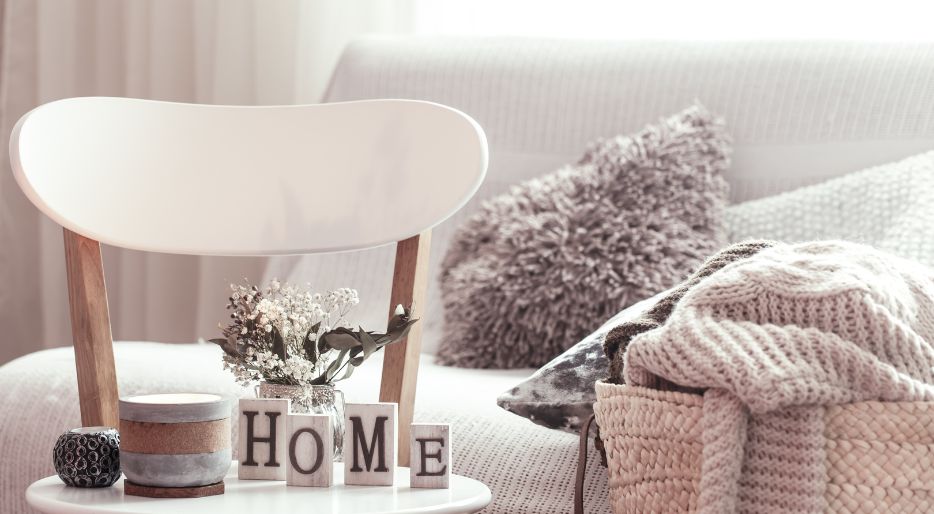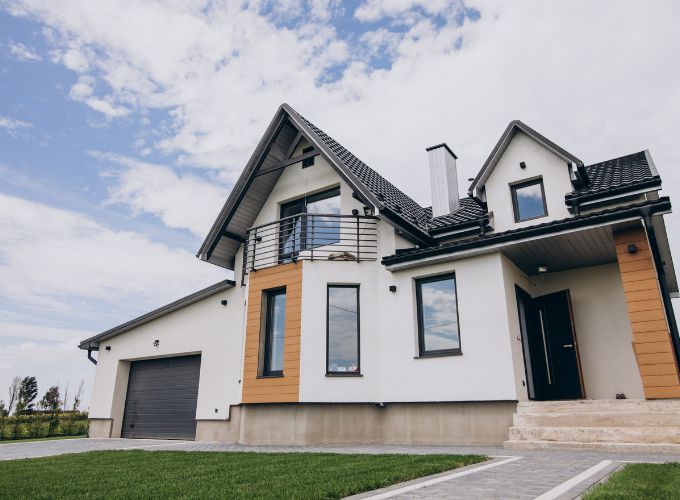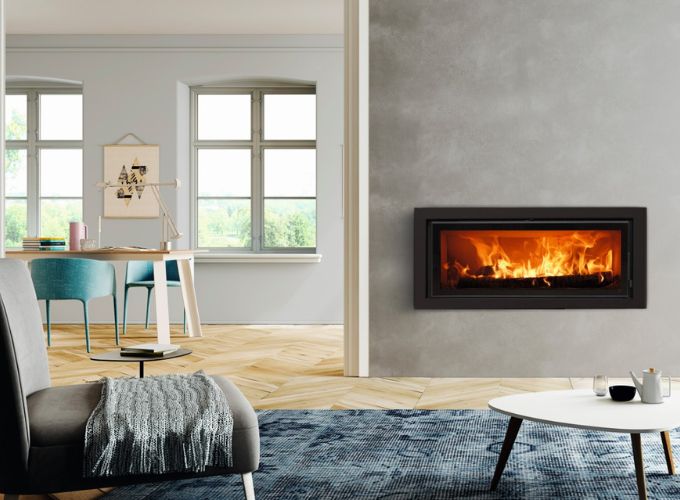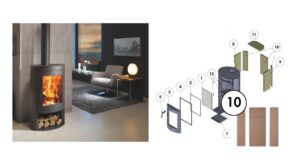
Although we enjoy the warmth of the fireplace, the odors can be unpleasant. With simple tricks like vinegar, salt, or baking soda, you can keep your home fresh and cozy.

The ideal temperature in a home is not simply a matter of personal preference, but has a significant impact on our quality of life, encompassing aspects ranging from comfort and health to energy efficiency. In this blog, we will look at the key factors to consider and offer useful tips to help you find the perfect temperature in both summer and winter through wood stoves.

There are several reasons why temperature in the home is important, here are some of the most important ones:
Maintaining the right temperature in the home is essential for the comfort and well-being of the people who live there. A comfortable temperature helps us to feel comfortable, relaxed and cosy, which contributes to our overall well-being.
The temperature of the environment can affect the quality of our sleep. Sleeping in an environment that is too hot or too cold can make it difficult to fall asleep or stay asleep throughout the night. An ideal room temperature can promote restful sleep, which is essential for our health and well-being.
Maintaining the right temperature in the home can also help to optimise energy efficiency. If the temperature is too high in winter or too low in summer, we may rely more on heating or cooling systems, which can increase energy consumption and associated costs.
Extreme temperature fluctuations can affect the durability and condition of furniture, appliances and other objects in the home. Maintaining a stable and appropriate temperature can contribute to their long-term preservation.
Temperature and humidity in the home can also affect our respiratory system. Overly dry or humid environments can lead to respiratory problems, dry skin or irritation of the respiratory tract.

Secondly, it is essential to understand the factors that go into finding the perfect balance in your home:
There are temperature ranges that are generally considered comfortable for most people in different situations:
A temperature between 23°C and 26°C is usually comfortable for most people during the day. If the heat is too intense, you can adjust it to your personal preference, always avoiding extreme temperatures.
Most people find a temperature between 18°C and 22°C comfortable during the day. At night, a slightly cooler temperature, around 15°C to 18°C, can promote better sleep. In winter to keep the heat constant it is recommended to use a wood-burning cooker. Wood stoves, cosy warmth that many people find comforting. Also, if you live in an area prone to elective power cuts, having a wood-burning cooker can provide an independent source of heat.
A cooler, slightly lower temperature has been shown to promote better quality sleep. In general, a temperature between 16°C and 20°C can be considered an ideal sleeping temperature, but again, this can vary according to individual preferences. Using a wood stoves to heat your bedroom can have advantages, as it is an efficient and economical heating system.
It is important to pay special attention to families with young children at home, as their needs are different from those of adults. In these cases, it is recommended to maintain an ideal home temperature of between 22 and 24 degrees Celsius during the day and between 18 and 20 degrees Celsius at night. In addition, heating the house in the winter months with high-efficiency heaters can reduce carbon dioxide emissions and improve the air quality in the home.

In conclusion, whatever temperature you choose, make sure you optimise the energy efficiency of your home. Temperature in the home is a vital aspect that affects our comfort and health. Finding the perfect balance may require a little experimentation and adjustment, but the benefits will be well worth it. Finally, it is worth noting that in the colder times of the year it is recommended to heat your home with wood-burning cookers to maintain a constant and long-lasting warmth. This decision depends, on the other hand, on individual preferences, environmental considerations and economic viability.
If you have any questions, please feel free to ask us! We hope this post has served as a guide. Take a look at our blog and find solutions and recommendations to help you with your fireplace or wood stove.
Visit our online store for Panadero wood stoves. If you have any questions or need help choosing the right stove, don’t hesitate to contact us. We will be happy to help you.
Articles of interest:
Did you like this article? If so, help us spread it 😊 . Click on the buttons below here and feel free to share it on your social networks!
Thank you for reading!
↓ ↓ ↓ ↓

Although we enjoy the warmth of the fireplace, the odors can be unpleasant. With simple tricks like vinegar, salt, or baking soda, you can keep your home fresh and cozy.

How to avoid dust in the house when using a wood stove: tips and tricks for a clean and healthy home

Learn how to remove mould from your wood for use by following the steps in this article.

All you need to know: what it is, uses and benefits of wood stoves
To provide the best experiences, we use technologies like cookies to store and/or access device information. Consenting to these technologies will allow us to process data such as browsing behavior or unique IDs on this site. Not consenting or withdrawing consent, may adversely affect certain features and functions.